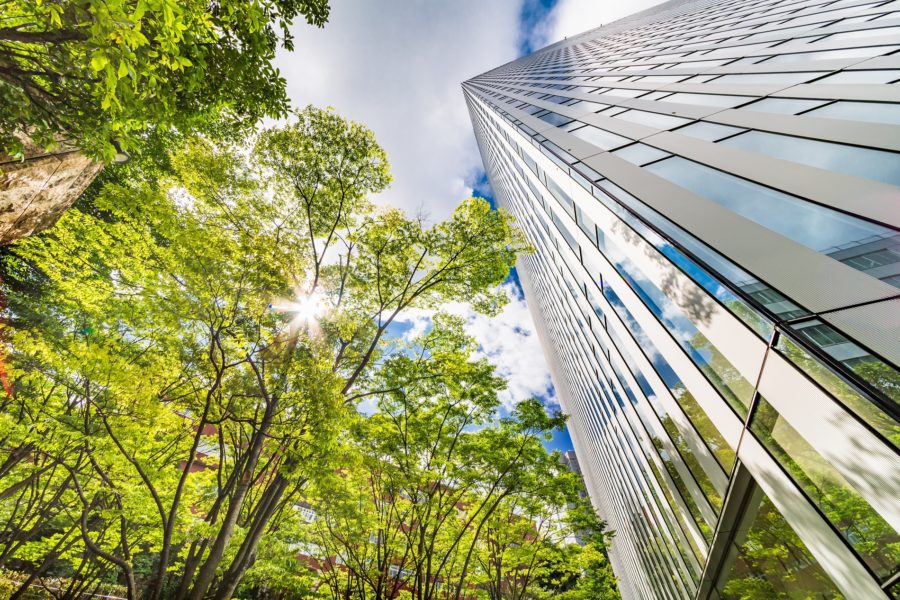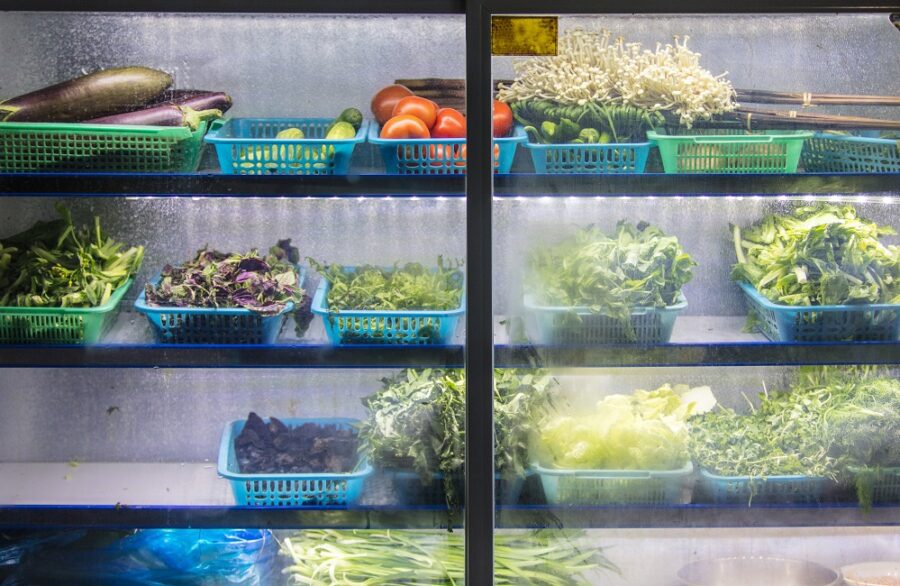
Commercial
The Rise of the Suburban Office Building: A Key Competitive Edge in the War for Talent
Written by: Parcel Pending
6 Min Read
Published: December 29, 2021
Updated: March 31, 2023
The effects of the COVID-19 pandemic have had profound implications on the future of work – permanently shifting Americans’ preference for quality of living, work, play, and work/life balance. As a result, the growth and redevelopment of the suburban office market is exploding across the US to meet the new demands of the workforce.
Hybrid Work is Here to Stay
52% of U.S. workers would prefer a mix of working from home and the office and 72% of leaders plan to offer hybrid work arrangements1,2. Staggering new research shows that remote work isn’t just a “nice to have,” but a condition of employment. 40% of Americans surveyed who were working at home said they would look for another job if their employer forced them to return to the office full time3.
And while some workers are finally returning to the office, it’s not the typical Monday through Friday schedule. According to Kastle Systems, a security company that tracks access-card swipes, an average of 31% of the workforce was back in the 10 major cities4; the average hit 35% during the week that ended October 1, 2021 and 36% during the week that ended October 8, 2021 – a new high during the COVID-19 pandemic period. For organizations across the nation, this demonstrates the need for an effective hybrid office design regardless of your company’s final decision on office location.
Hastening the Migration of Jobs Away from Big Cities
The preference for lower costs and more space during the height of COVID-19 pandemic led to workers fleeing superstar gateway cities known by their initials: CHI (Chicago), NYC (New York City), DC (Washington, D.C.), SF, (San Francisco), and LA (Los Angeles). The number of net new households that moved to the suburbs grew 43% last year compared to 2019, according to data from the Wall Street Journal, and urban areas are still losing people as they relocate to suburban and rural areas5,6.
Although there’s no official definition of “the suburbs”, “suburbia”, “surban”, or “suburban area”. The suburbs are typically considered an area convenient location that’s close to a metropolitan area and doesn’t have more than 100,000 people. New census population data shows that the cities experiencing the fastest household growth tend to be more suburban.
This super-charged migration to suburban areas coupled with fears of crowded, indoor spaces virtually crashed most major public transportation systems. The American Public Transit Association reports, not surprisingly, that ridership was down 73% in April of 2020 vs a year ago7; but, more devastating are the new numbers on mass transit around the world: the London Underground which normally transports four million daily journeys is down 80%, the Paris Metro is operating at just half its normal capacity, and the New York MTA reported in early October that its subway system remains at 50% below pre-pandemic levels8.
Millennials are Moving; Suburban Office Parks are Transforming
Millennials, those aged 25-40, are the most in-demand “unicorns” for companies needing technologically sophisticated employees. They currently represent 50% of the workforce and will hit 75% by 202510. These are the workers who want it all: work flexibility, open spaces, access to nightlife, quaint coffee shops or downtown areas with a great shopping experience, and mid-day workouts. Enter the next normal for suburban development of office parks.
“The master plan is to build a place that’s a neighborhood, where you can get to everything within 15 minutes by bike or car on our campus, and then support that with really great amenities, technology, programming, design, culinary, and wellness,” explains Shane Connell, the fourth-generation head of the Connell Company and developer of the original office park11.
Another example of suburban real estate office development is the Arsenal Yards, a once defunct mall that is now a mixed-use space full of retail, residences, and restaurants. Its website is bustling with fair announcements (sold out), new restaurants, activities, wine bars, and grocery stores that are luring in renters from nearby Boston. In fact, 76% of its apartment space and 85% of its retail space are leased12.
Suburban office parks across the U.S. are being redeveloped to bring in a greater diversity of uses and shift away from the office-only model. This includes residential, retail, and other kinds of services and public spaces that can appeal to someone driving in to work, walking over to grab lunch, or driving for a dinner date. Despite the pandemic’s transformation of workspaces, these redevelopment projects are revolutionizing the corporate parks and office complexes of suburban America. If done correctly, communities across the nation that initially were built with only work in mind could find themselves teeming with a more diverse and economically sustainable type of life.
Navigating the New Hybrid Office
With hybrid work comes new policies and procedures including who comes to the office, when workers come into the office, and how to host efficient office meetings with some employees in the conference room and some working remotely. Real estate data firm VTS swooped in to purchase office app developer Lane Technologies for $200 million in mid-October, demonstrating the need for navigating this new work landscape13. Its app, with 1,400 buildings and over 2 million users lets office workers schedule conference rooms, desks, and even open security doors. Workplace “hoteling” is also proving popular whereby employees no longer have dedicated desks or phones, but instead, reserve a workplace online for a specified period of time.
Smart Lockers: the Essential Amenity for the New Suburban World
Concurrent with these hybrid work trends is the need for smart lockers for employee use. These office lockers serve as efficient distribution hubs for the exchange of goods between colleagues and interoffice mail, as well as outside mail and packages for a workforce that is no longer in the office full-time Monday through Friday. With package delivery at the office on the rise, smart parcel locker systems allow for easy and safe package pickup with zero face-to-face interaction by sending recipients a unique access code and/or a barcode to their smartphone. These contact-free pick-up features also allow employees to quickly retrieve deliveries or other goods at their convenience. In fact, it typically takes less than 10 seconds to retrieve a parcel with no signature required.
Today, workers want a short commute, walking spaces, cool dining and entertainment options, and a flexible work environment – all within a 15-minute drive of their new suburban residence. Suburban office park developers need to serve up these environments with the right amenities, including smart lockers, to meet these changing needs.
To discover how smart parcel lockers can help you provide a premium suburban office experience for your tenants or employees, contact a Parcel Pending by Quadient representative today!
Sources:
- Gensler Research Institute. (2020). U.S. Workplace Survey Summer/Fall 2020 [Data set]. Gensler Research Institute. https://www.gensler.com/gri/us-workplace-survey-2020-summer-fall
- Steelcase. (2020). Global Report: Changing Expectations and the Future of Work [Report]. Retrieved from: https://www.steelcase.com/research/articles/topics/work-better/changing-expectations-future-work/
- Cutter, Chip. The Wall Street Journal. The Boss Wants You Back in the Office. Like, Now. (2021, July 24). https://www.wsj.com/articles/return-to-work-the-boss-wants-you-back-in-the-office-11627079616.
- Grant, Peter. The Wall Street Journal. Return of Office Workers Reaches Pandemic High as Employees Trickle In. (2021, October 12). https://www.wsj.com/articles/return-of-office-workers-reaches-pandemic-high-as-employees-trickle-in-11634031001?mod=article_inline.
- Campo-Flores, Arian, et al. The Wall Street Journal. The Pandemic Changed Where Americans Live. (2021, April 27). https://www.wsj.com/articles/pandemic-supercharged-changes-in-where-americans-live-11619536399.
- Evangelou, Nadia. National Association of Realtors. Migration in the First Half of 2021. (2021, August 19). https://www.nar.realtor/blogs/economists-outlook/migration-in-the-first-half-of-2021.
- American Public Transportation Association. (2020). The Impact of the COVID-19 Pandemic on Public Transit Funding Needs in the U.S. [Report]. Retrieved from: https://www.apta.com/research-technical-resources/research-reports/
- Sengupta, Somini, et al. The New York Times. After a year of the pandemic, public transit around the world is hanging by a thread. (2021, March 27). https://www.nytimes.com/2021/03/27/world/after-a-year-of-the-pandemic-public-transit-around-the-world-is-hanging-by-a-thread.html.
- Bureau of Policy and Research, City of New York Office of the Comptroller. (2021). Beyond Rush Hour: COVID-19 and The Future of Public Transit [Report]. Retrieved from: https://comptroller.nyc.gov/reports/beyond-rush-hour/
- American Real Estate Partners (AREP) & Oliver Tyrone Pulver Corporation. Philadelphia Business Journal. The rise of the urban-suburban office: 3 trends driving corporate migration. (2021, April 28). https://www.bizjournals.com/philadelphia/news/2021/04/28/the-rise-of-the-urban-suburban-office-3-trends.html.
- Berg, Nate. Fast Company. The suburban office park rises from the dead. (2021, September 27). https://www.fastcompany.com/90678287/the-suburban-office-park-rises-from-the-dead.
- Molla, Rani. Vox. Remote work is bringing the city to the suburbs. (2021, October 21). https://www.vox.com/recode/22714777/remote-work-from-home-city-suburbs-housing-traffic.
- Grant, Peter. The Wall Street Journal. App Deal Highlights a Push to Lure Workers Back Into Offices. (2021, October 19). https://www.wsj.com/articles/app-deal-highlights-a-push-to-lure-workers-back-into-offices-11634635802.





